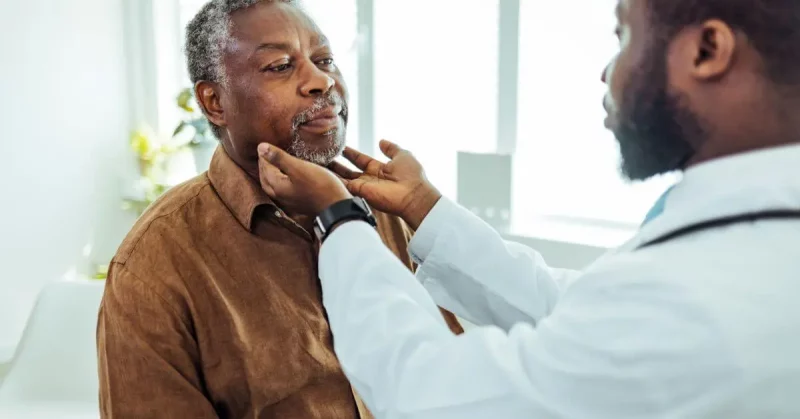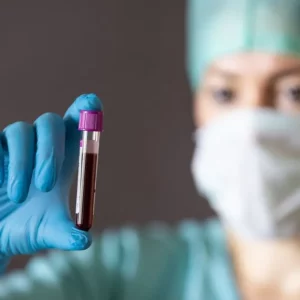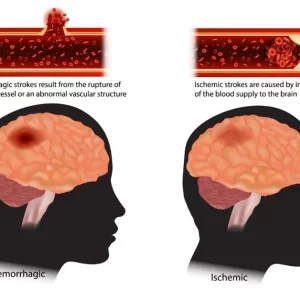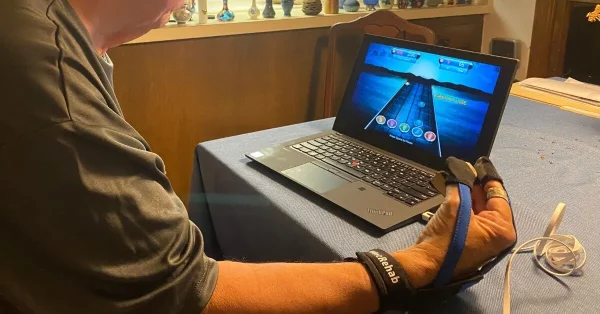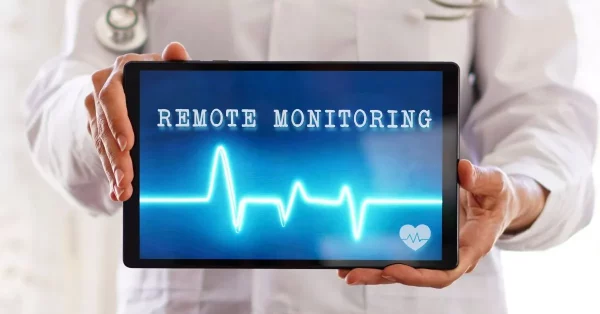Cryptogenic stroke refers to a type of stroke where the cause is unknown. Unlike other strokes that have identifiable causes like high blood pressure or blocked arteries, cryptogenic strokes remain a mystery even after thorough medical testing. This can be frustrating for both patients and healthcare providers as it makes treatment challenging.
Cryptogenic Stroke Definition
The term “cryptogenic” comes from the Greek words “crypto,” meaning hidden, and “genic,” meaning origin. Therefore, cryptogenic stroke essentially means a stroke with a hidden origin. While the cause isn’t immediately clear, it doesn’t mean the stroke is any less serious than other types.
Cryptogenic strokes are diagnosed when all other potential causes have been ruled out through extensive testing. This means that the medical team has exhausted typical diagnostic routes, yet no clear cause emerges. This absence of a known trigger makes cryptogenic strokes a subject of ongoing research and interest in the medical community.
Approximately 30-40% of ischemic strokes are cryptogenic. While up to 65% of cryptogenic strokes show signs of being caused by an embolism (a blockage in the arteries), diagnostic tests and imaging are unable to fully confirm this.
Importance of Recognizing Cryptogenic Strokes
Understanding cryptogenic strokes is crucial for several reasons. First, without a clear cause, these strokes can be more difficult to prevent, leading to an increased risk of recurrence. Moreover, the uncertainty surrounding cryptogenic strokes can cause significant anxiety for patients and their families, who are often left with more questions than answers.
Recognizing cryptogenic strokes also emphasizes the need for innovative approaches in stroke management and research. By focusing on this mysterious category of strokes, researchers can explore new avenues of understanding that might apply to all stroke types, potentially leading to breakthroughs in prevention and treatment.
Common Misconceptions
There are several misconceptions about cryptogenic strokes that can affect how they are perceived and treated. One common misunderstanding is that “unknown cause” equates to “less serious.” On the contrary, a lack of identifiable cause can complicate treatment plans and necessitate a more cautious approach to patient care.
Another misconception is that cryptogenic strokes are exceedingly rare. While they are less common than strokes with known causes, they represent a significant portion of ischemic strokes, thus highlighting the importance of continued research and awareness.
How is Cryptogenic Stroke Diagnosed?
Diagnosing a cryptogenic stroke involves several tests to rule out known causes of stroke. These tests may include:
Brain Imaging Techniques
Advanced imaging techniques such as MRIs and CT scans are fundamental in diagnosing cryptogenic strokes. These technologies allow physicians to view detailed images of the brain, identifying areas affected by the stroke.
Ischemic strokes occur when the blood supply within the brain is blocked, while hemorrhagic strokes occur when a blood vessel bursts, causing bleeding within or surrounding the brain. Although the precise causes of most ischemic and hemorrhagic strokes can be identified, diagnostic tests and imaging are unable to pinpoint a clear cause in cases of cryptogenic stroke.
MRIs offer high-resolution images, which can detect even small areas of damage, while CT scans are often used for their speed and ability to highlight bleeding in the brain. In addition to standard imaging, newer techniques like diffusion-weighted imaging (DWI) can provide insights into the acute phase of ischemic stroke, helping to differentiate between cryptogenic and other stroke types. These imaging tests are crucial in ruling out other potential causes and understanding the extent of the damage.
Heart Monitoring and Cardiovascular Testing
Heart health plays a pivotal role in stroke risk, and thus, monitoring heart function is a key component of cryptogenic stroke diagnosis. An electrocardiogram (EKG) is typically used to detect irregular heart rhythms that could lead to stroke, such as atrial fibrillation.
For more comprehensive monitoring, patients might use portable heart monitors, such as Holter monitors, which can track heart activity over an extended period. This monitoring helps detect intermittent arrhythmias that might not be captured during a standard EKG, providing essential data that could point to a cardiovascular cause of the stroke.
Comprehensive Blood Testing
Blood tests are another critical element in diagnosing cryptogenic strokes. These tests can detect clotting disorders, high cholesterol levels, or other abnormalities that might contribute to stroke risk.
In some cases, specific tests are conducted to identify markers of inflammation or genetic factors that could predispose individuals to strokes. By analyzing these blood test results, healthcare providers can rule out certain conditions and hone in on potential underlying issues that might otherwise go unnoticed.
Possible Causes of Cryptogenic Stroke
While the exact cause of a cryptogenic stroke remains unknown, researchers have identified several potential factors that might contribute:
Atrial Fibrillation (AFib)
Atrial fibrillation, or AFib, is a common heart condition that may lead to cryptogenic stroke. It is characterized by an irregular and often rapid heart rate that can cause poor blood flow. Since the heart is not pumping normally, blood may pool in the upper chambers of the heart, making it more susceptible to clotting. Blood clots formed in the heart can travel to the brain, causing a stroke. However, AFib may not always be detectable in initial tests, especially if it occurs intermittently.
Long-term monitoring is often required to identify AFib in cryptogenic stroke patients. This condition highlights the need for ongoing surveillance and patient education about recognizing symptoms such as palpitations or shortness of breath, which could indicate AFib.
Patent Foramen Ovale (PFO)
Patent Foramen Ovale (PFO) is another potential factor in cryptogenic strokes. Before birth, individuals have a small, flap-like opening in the heart that allows blood to bypass the lungs. While this opening is typically fully closed within the first few months after birth, about 25% of individuals experience patent foramen ovale, where this area remains open.. This opening can allow blood clots to pass from the right side of the heart to the left, potentially traveling to the brain and causing a stroke.
The presence of a PFO is often detected through specialized imaging tests like echocardiograms. While not all PFOs result in strokes, understanding this potential cause can help guide treatment decisions, including whether to close the PFO surgically.
Genetic Predispositions
Genetic factors may play a role in cryptogenic stroke, though this area requires further research. Some individuals may inherit genetic traits that increase their risk for stroke, such as clotting disorders or conditions that affect blood vessel health.
Research into genetic links aims to identify specific markers that could predict an individual’s stroke risk. Understanding these genetic components could eventually lead to personalized treatment plans and preventative measures tailored to each patient’s unique genetic profile.
Lifestyle and Environmental Factors
While not direct causes, lifestyle and environmental factors can contribute to the risk of cryptogenic stroke. Poor diet, lack of exercise, chronic stress, smoking, and excessive alcohol consumption are known risk factors for cardiovascular disease, which can indirectly lead to strokes.
Addressing these lifestyle factors is crucial in managing overall health and reducing stroke risk. Healthcare providers often work with patients to create individualized plans for diet, exercise, and other lifestyle changes that promote heart and brain health.
Treatment Options for Cryptogenic Stroke
Treating cryptogenic stroke can be challenging due to the unknown cause. However, several treatment options are available to manage the condition and prevent future strokes.
Medications
Anticoagulants
Anticoagulants, often referred to as blood thinners, are commonly prescribed to prevent the formation of new blood clots. These medications, such as warfarin or newer agents like dabigatran, work by interfering with the blood’s clotting process. While effective, they require careful monitoring to balance the risk of bleeding with their benefits.
Patients on anticoagulants are typically monitored through regular blood tests to ensure medication levels are appropriate. This careful management helps optimize the treatment’s effectiveness while minimizing potential side effects.
Antiplatelet Drugs
Antiplatelet medications, such as aspirin or clopidogrel, prevent platelets from clumping together, which can lead to clot formation. These drugs are often recommended for patients with cryptogenic stroke to reduce the risk of recurrence.
Unlike anticoagulants, antiplatelet drugs generally require less frequent monitoring, making them a convenient option for many patients. However, they still carry risks, particularly for individuals with a history of bleeding disorders or those taking other medications.
Cholesterol-Lowering Drugs
Statins and other cholesterol-lowering drugs are frequently prescribed to manage cholesterol levels, a crucial factor in stroke prevention. By reducing cholesterol, these medications help prevent the build-up of plaques in the arteries, decreasing the risk of stroke.
These drugs are often part of a comprehensive treatment plan that includes lifestyle changes. Patients on cholesterol-lowering medications usually undergo regular blood tests to monitor their cholesterol levels and adjust dosages as needed.
Lifestyle Changes
Adopting a healthier lifestyle can significantly reduce stroke risk. Patients are encouraged to:
Make Dietary Adjustments
A balanced diet rich in fruits, vegetables, whole grains, and lean proteins is essential for heart and brain health. Reducing sodium and saturated fat intake can help manage blood pressure and cholesterol levels, critical factors in stroke prevention.
Dietary changes often involve working with a nutritionist or dietitian to create a personalized eating plan that meets individual health needs and preferences. This tailored approach ensures that dietary adjustments are sustainable and effective.
Engage in Regular Physical Activity
Engaging in regular physical activity is another key component of stroke prevention. Exercise helps maintain a healthy weight, reduces blood pressure, and improves cardiovascular health. Patients are often advised to incorporate at least 150 minutes of moderate-intensity exercise into their weekly routine.
Physical activity plans should be tailored to each patient’s abilities and preferences, ensuring they are both enjoyable and effective. This personalized approach encourages long-term adherence and maximizes health benefits.
Smoking Cessation and Alcohol Moderation
Quitting smoking and moderating alcohol intake are critical steps in reducing stroke risk. Smoking is a well-known risk factor for cardiovascular disease, while excessive alcohol consumption can lead to high blood pressure and other health issues.
Support programs and resources are often available to assist patients in these lifestyle changes. This support can include counseling, medication to aid smoking cessation, or structured programs to help manage alcohol consumption.
Surgical Options
In some cases, surgical procedures might be necessary. For example, closing a patent foramen ovale (PFO) might reduce the risk of future strokes if it’s suspected to be a contributing factor.
PFO Closure
PFO closure is a minimally invasive procedure where a device is inserted to close the opening between the heart’s chambers. This procedure can significantly reduce stroke risk in patients where a PFO is identified as a potential cause.
The decision to undergo PFO closure is made after careful evaluation by a team of specialists. Factors such as the patient’s overall health, stroke history, and other risk factors are considered in determining the best treatment approach.
Other Surgical Interventions
In some instances, other surgical interventions may be recommended, such as carotid artery surgery to remove plaques and blockages that could lead to stroke. These procedures are typically reserved for patients with significant arterial narrowing that poses a high risk of stroke.
As with PFO closure, the decision to pursue these surgical options involves a comprehensive evaluation of the patient’s condition and potential benefits and risks of the surgery.
Living with Cryptogenic Stroke
Living with a cryptogenic stroke can be daunting, especially with the uncertainty surrounding its cause. However, with proper treatment and lifestyle adjustments, many people continue to lead fulfilling lives.
Rehabilitation
Stroke rehabilitation is crucial for recovery. It may include physical therapy, occupational therapy, and speech therapy, depending on the stroke’s effects.
Physical Therapy
Physical therapy focuses on restoring movement and strength in affected limbs. Therapists work with patients to improve mobility, balance, and coordination, helping them regain independence in daily activities.
Therapy sessions are often tailored to each patient’s specific needs and progress, ensuring that the rehabilitation process is both challenging and achievable. This personalized approach helps maximize recovery potential.
Occupational Therapy
Occupational therapy assists patients in relearning daily tasks, such as dressing and eating, and improving their ability to perform these tasks independently. This therapy often involves exercises and activities that enhance fine motor skills, cognitive function, and adaptation to new physical limitations. It may also include learning new ways of completing daily activities by using adaptive tools or techniques.
Through practical, everyday exercises, occupational therapy helps patients regain confidence and independence, crucial components in post-stroke recovery.
Speech Therapy
Speech therapy is essential for patients who experience communication difficulties or swallowing issues after a stroke. Therapists help patients improve their speech, language, and cognitive-communication skills through targeted exercises.
This therapy not only focuses on speech production but also on comprehension , ensuring a comprehensive approach to communication recovery. If needed, speech therapists may train patients and family members to use alternative communication strategies, such as gestures or communication boards, to enhance communication during recovery.
Home Programs
In the first few months after a stroke, the brain enters a heightened state of neuroplasticity, during which its ability to adaptively rewire itself is enhanced. Therefore, after the patient’s condition has stabilized, it is very beneficial to start rehabilitation promptly.
Consistently practicing affected tasks is essential to boost neuroplasticity and promote recovery. Therefore, many therapists will provide patients with a home program that includes exercises and tasks for the patient to practice on a daily basis. There are also programs and apps, such as FitMi Home Therapy, that can be used to encourage regular practice and enhance recovery.
Support Systems
Building a strong support system is vital. This includes family, friends, and support groups that can provide emotional and practical support during recovery.
Caregivers, Family and Friends
Family and friends play a crucial role in the recovery process, offering emotional support, encouragement, and assistance with daily tasks. Their involvement can significantly impact the patient’s motivation and overall well-being.
Educating loved ones about stroke and its effects can help them provide more effective support and foster a positive, understanding environment.
Support Groups
Joining support groups can offer patients valuable opportunities to share experiences and advice with others who have undergone similar challenges. These groups provide a sense of community, reducing feelings of isolation and offering practical tips for managing life post-stroke.
Support groups can be found through hospitals, community centers, or online platforms, providing flexible options for participation.
Professional Counseling
Professional counseling services can also be beneficial for patients and their families. Therapists specializing in stroke recovery can help manage emotional challenges such as anxiety, depression, or frustration, which are common in stroke survivors.
Counseling offers a safe space for patients and families to express their feelings and work through the psychological impact of a stroke.
Cryptogenic Stroke Final Thoughts
Cryptogenic stroke remains a challenging condition due to its unknown causes. However, with the right approach to diagnosis, treatment, and lifestyle changes, patients can effectively manage their condition. Ongoing research continues to uncover more about cryptogenic strokes, offering hope for better understanding and management in the future.
By staying informed and proactive, patients can take charge of their health and work towards preventing future strokes. Remember, if you suspect a stroke, seek medical attention immediately — every moment counts.
